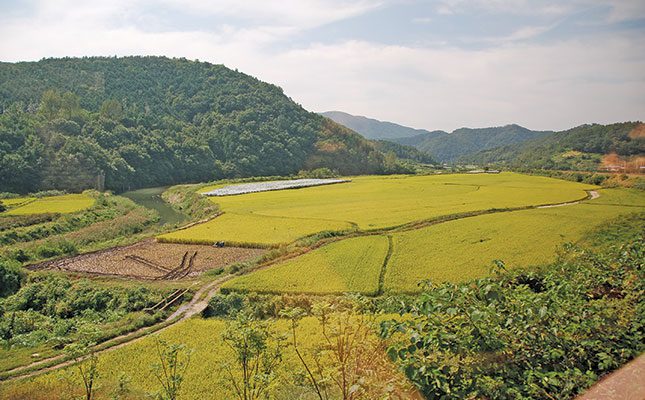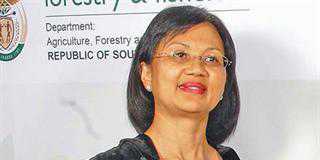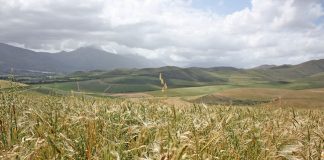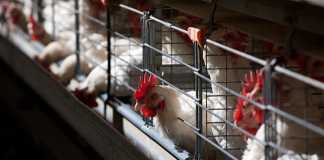
Photo: Wikimedia Commons
South Korea has been touted by many agricultural economists and other industry role players as a burgeoning market for South African agricultural trade.
This is largely because South Korea is a major importer of food and food products. And with a population of close to 52 million people and topography that doesn’t lend itself to extensive agricultural production, it is likely that South Korea will remain a net importer of food for some time to come.
This is evidenced by the increase in the value of agricultural products imported into the country over the past decade, with the import value of food rising from US$21,36 billion (about R180 billion) in 2012 to US$32,58 billion (R526 billion) in 2021.
History of agriculture in South Korea
According to the Organisation for Economic Co-operation and Development, when it comes to agricultural production, South Korea is one of the world’s least self-sufficient countries.
Despite the current state of agriculture in South Korea, the country was a mostly agricultural society until the 1960s. As in many countries, farmers in early South Korea were mostly peasants who grew crops and farmed livestock on land owned by wealthy landlords.
From 1945 to 1950, the US and South Korean governments set about restoring land to the landless farmers. However, this programme was interrupted by the Korean War, which lasted from mid-1950 to mid-1953.
The Land Reform Act was thus only fully implemented in June 1954, after the Korean War had ended. The Act introduced an ownership cap on land, with each household only allowed to own up to 3ha. The South Korean government also bought land to distribute among farmers who didn’t have any.
With the rise of industrialisation in the 1960s, many farmers moved from the land to the cities to capitalise on better employment opportunities. However, before the industrialisation boom, 63% of South Koreans were farmers and lived in rural areas.
By the 1980s, however, this had dropped to 21% of the workforce, and farms were an average of 0,5ha to 1ha in size. By 2019, the percentage of South Koreans working in agriculture had dropped below 6%. By comparison, the world average in 2019 based on 180 countries was 23,51%.
Problems with expanding agriculture
South Korea is a mountainous country, and only 22% of its land is arable, making it difficult to efficiently run livestock or grow crops there.
Moreover, ownership laws capping the amount of land that farmers can own has made it difficult for them to produce at scale, and to implement improved technologies that prove too expensive.
The expansion of cities and urban areas have also led to a decrease in arable land. In addition, South Korea has the challenge of an ageing farming population, with the average age of farmers in the country at around 65 years.
Unfavourable weather also remains an issue, despite the government’s support initiatives to promote smart farming that is less water-intensive and more tolerant of changes in temperatures.
In 2021, South Korea’s agriculture sector contributed less than 2% to the country’s gross domestic product (GDP). By comparison, in 1987, the sector contributed 12,8% to the national GDP.
Opportunities
South Korea’s economy has seen significant growth over the past three decades and is on course to expand even further as the country establishes itself in industry.
This means consumers are becoming wealthier and therefore have more money to spend on food.
South Korea is the eighth-largest importer of agricultural goods in the world, according to the US Department of Agriculture. It is a major importer of beef, maize, pork and fresh fruit.
The US is currently South Korea’s biggest trading partner of agricultural products, accounting for around 27% of all South Korean imports. The EU follows with a 13% stake, Australia with 11% and China with 10%.
Beef
According to Jung-Sup Choi et al, beef is very expensive in South Korea because of a lack of local supply and tariffs on imported goods. Between 1990 and 2000, demand for beef in the country rose by 8,6% per annum, even as the national herd continued to shrink. Thus, the country has been importing more beef to meet the growing demand of wealthier consumers.
Beef is mostly consumed as bulgogi (barbequed meat), for which high-value cuts such as sirloin and rib-eye are generally used. In a survey by South Korea’s National Agricultural Cooperative Federation in 2000, which asked respondents in and around the capital city of Seoul about their meat preferences, 73% of respondents said that the quality of beef was more important than its price.
Despite the increase in demand for beef, it is unlikely that South Korean beef production will grow. One of the reasons for this is that all of the country’s feed requirements are imported, making it very expensive for farmers to raise cattle. And since farmers can’t produce at scale, beef production is largely unprofitable, too.
South Africa produces ample high-quality beef at relatively affordable prices. South Korea is therefore an important potential market for large-scale meat exports from South Africa. Currently, South Korea mainly imports meat from the US, Canada, Australia and New Zealand.
One of the barriers to boosting South African beef exports to South Korea is bureaucratic red tape, as well as outbreaks of diseases like foot-and-mouth disease. That is why it is very important for South Africa to negotiate compartmentalisation protocols with South Korea to give local exporters access to this highly lucrative market.
Choi et al also said that as South Korea’s beef imports continue to rise, price may become a differentiating factor. Therefore, if favourable tariffs could be negotiated, South Africa would be able to compete on price with countries that already export beef to South Korea, thanks to the largely affordable beef production here.
Wine
South Korea isn’t a major consumer of wine; however, wine consumption has seen a double-digit increase over the past five years. (Still and sparkling grape-based wine consumption showed compound annual growth of 16% and 15% respectively over this period, according to Wine Intelligence’s website.)
The main alcoholic beverages in South Korea are beer and spirits, but these saw a decline in consumption over the same period.
Thus, there is great potential for the exportation of wine from South Africa to South Korea.
Statistics also show that from 2017 to 2022, the number of consumers of grape-based wine in South Korea rose from 10,2 million to 12,6 million.
According to Wine Intelligence: “This, in other words, is a category that is getting both broader and deeper in its penetration, yet it is one that still has huge potential, not least because per capita consumption remains extremely low.
“Being able to convert even a small percentage of [South Korea’s] non-wine drinkers, or upselling the existing wine-drinking population slightly, could guarantee many more years of strong figures for the wine industry.”
Despite the fact that it was only in 2020 that the South Korean government relaxed its rules regarding the online purchase of alcohol, one in five Korean wine drinkers now purchases wine in this way. This means there are further opportunities for marketing exposure in and improving exports of wine to the country.
Sources: ‘South Korea Remains One of Wine’s Rare Hotspots for Growth’; ‘Beef Consumption, Supply and Trade in Korea’. .










